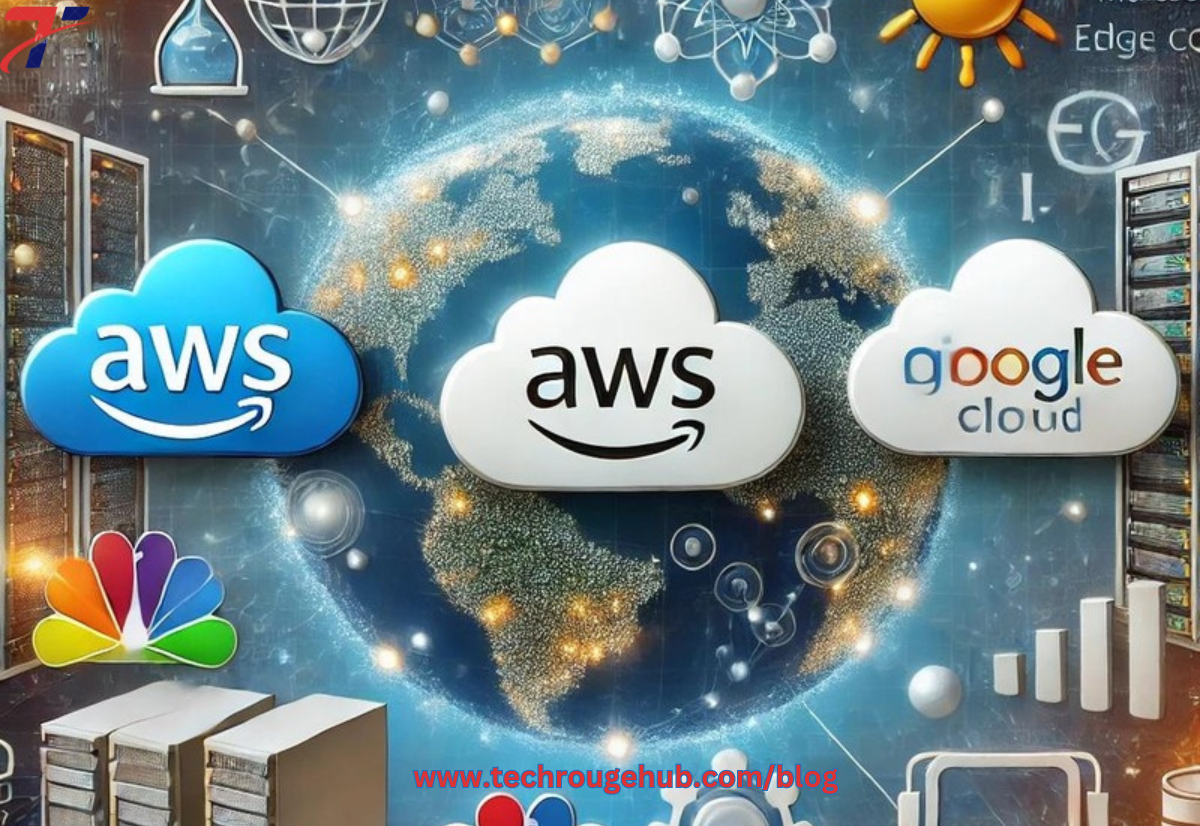The cloud computing industry is constantly evolving, driven by major players like Amazon Web Services (AWS), Google Cloud, and Microsoft Azure. These platforms are at the forefront of innovation, continuously introducing new features and services that are reshaping how businesses manage their data, scale their operations, and enhance productivity. In this blog, we will explore some of the latest trends in cloud computing and how AWS, Google Cloud, and Microsoft Azure are leading the charge.
1. Serverless Computing on the Rise
Serverless computing is becoming a popular choice for developers and businesses alike. By eliminating the need to manage the underlying infrastructure, serverless platforms allow developers to focus solely on writing code. AWS Lambda, Google Cloud Functions, and Azure Functions are at the forefront of this shift, enabling users to build and deploy applications without worrying about server provisioning.
Benefits of Serverless Computing:
- Cost-Efficient: You only pay for the computing resources you use, which can significantly reduce costs.
- Scalability: Serverless applications automatically scale to handle increasing loads.
- Improved Developer Productivity: Developers can concentrate on building features rather than managing infrastructure.
2. Hybrid Cloud Solutions

Hybrid cloud is one of the most significant trends shaping the future of cloud computing. Businesses are increasingly adopting hybrid cloud solutions, which combine private and public cloud environments to create a more flexible and scalable infrastructure. AWS, Google Cloud, and Microsoft Azure are all focusing heavily on hybrid cloud solutions to meet the growing demand for data sovereignty, security, and flexibility.
Major Hybrid Cloud Offerings:
- AWS Outposts: Brings AWS services on-premises, enabling a seamless hybrid environment.
- Google Anthos: Google’s hybrid and multi-cloud platform that allows businesses to run applications anywhere, on-premises or in the cloud.
- Azure Arc: Microsoft’s solution to manage and secure hybrid cloud resources across data centers, edge devices, and public clouds.
3. AI and Machine Learning Integration

Artificial intelligence (AI) and machine learning (ML) are becoming integral parts of cloud offerings. AWS, Google Cloud, and Microsoft Azure are incorporating advanced AI and ML tools into their platforms to help businesses leverage data more effectively, gain insights, and automate processes. These tools are designed to be accessible even to businesses that may not have extensive in-house data science expertise.
Key AI/ML Services:
- AWS SageMaker: A fully managed service that enables developers and data scientists to quickly build, train, and deploy machine learning models.
- Google Cloud AI Platform: Google’s suite of AI and ML tools that allow businesses to build, deploy, and scale models on Google Cloud infrastructure.
- Azure Machine Learning: A service that provides developers with tools to create, train, and deploy ML models efficiently.
4. Edge Computing
Edge computing is gaining momentum as businesses seek to process data closer to where it’s generated, reducing latency and improving performance. AWS, Google Cloud, and Microsoft Azure are all investing heavily in edge computing services to support applications that require real-time data processing.
Examples of Edge Computing Solutions:
- AWS Wavelength: Extends AWS infrastructure to the edge of the 5G network to reduce latency for mobile and connected device applications.
- Google Cloud’s Global Edge Network: Offers low-latency solutions by using Google’s global infrastructure to process data close to the user.
- Azure Edge Zones: Extends Azure cloud services to the edge, enabling real-time applications such as IoT and autonomous vehicles.
5. Focus on Sustainability
Sustainability has become a top priority for many cloud providers, driven by increasing concerns over environmental impact. AWS, Google Cloud, and Microsoft Azure are all committing to sustainability goals and are introducing energy-efficient infrastructure and initiatives to reduce their carbon footprint.
Sustainability Efforts:
- AWS: Committed to reaching 100% renewable energy usage by 2025 and carbon neutrality by 2040.
- Google Cloud: Already achieved carbon-neutral status and aims to operate on 100% carbon-free energy by 2030.
- Microsoft Azure: Has pledged to become carbon-negative by 2030 and is investing heavily in renewable energy and carbon-removal technology.
6. Multi-Cloud Strategies
Businesses are increasingly adopting multi-cloud strategies to avoid vendor lock-in and improve resiliency. By leveraging services from multiple cloud providers, companies can build more flexible and redundant systems. AWS, Google Cloud, and Microsoft Azure are responding to this trend by providing tools that allow easier integration with other cloud platforms, enabling businesses to run workloads across multiple clouds.
Multi-Cloud Tools:
- AWS CloudFormation: AWS offers templates to manage and provision resources in both AWS and non-AWS environments.
- Google Cloud’s Anthos: Anthos allows enterprises to manage multi-cloud and hybrid deployments across Google Cloud, AWS, and on-premises environments.
- Azure Arc: Azure’s solution for managing resources across multiple cloud environments, giving businesses a unified control plane for managing hybrid and multi-cloud infrastructures.
7. Security and Compliance
As businesses migrate to the cloud, security and compliance remain top concerns. AWS, Google Cloud, and Microsoft Azure are continually enhancing their security offerings to help businesses safeguard their data. From built-in encryption to advanced threat detection tools, these platforms are ensuring that businesses can meet their compliance requirements and protect against evolving cybersecurity threats.
Security Solutions:
- AWS Security Hub: A comprehensive security service that provides a unified view of security alerts and compliance status across AWS accounts.
- Google Cloud Security Command Center: Google’s solution for managing and monitoring security across your cloud environment.
- Azure Security Center: Microsoft’s security management system that provides advanced threat protection for hybrid cloud environments.
Conclusion
Cloud computing continues to evolve, with AWS, Google Cloud, and Microsoft Azure leading the way in innovation. From serverless computing to hybrid cloud solutions and AI/ML integration, the latest trends in cloud computing offer businesses more flexibility, scalability, and efficiency than ever before. As these platforms continue to push the boundaries of what’s possible, companies that stay ahead of these trends will be best positioned to leverage the full potential of the cloud for their operations.
Staying informed about these advancements will help you make better decisions when it comes to choosing and optimizing your cloud infrastructure.

